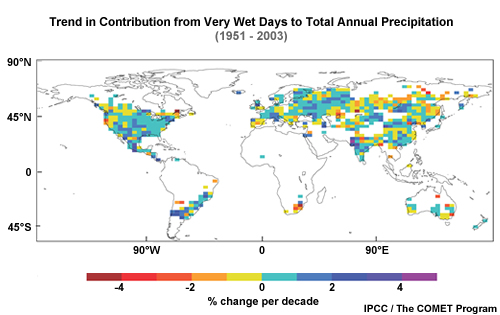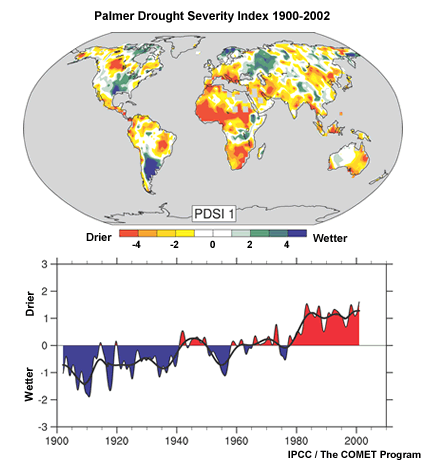Rain and Drought

More water vapor held by a warmer atmosphere also leads to heavier rains and more snowfall. In particular, heavy rains are increasing in temperate zones. For example, in the continental United States, intense precipitation increased by 20% over the past century, while total precipitation increased 7%.

More evaporative power doesn't just mean more rain—paradoxically, it also means that some areas get drier as storm tracks shift. A 2004 study by the National Center for Atmospheric Research found that the percentage of Earth's land experiencing serious drought had more than doubled since the 1970s.
And, along with drought, wildfires have become more widespread recently across the U.S. and Canadian West.